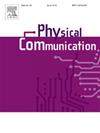Over-the-air multi-sensor inference with neural networks using memristor-based analog computing
IF 2
4区 计算机科学
Q3 ENGINEERING, ELECTRICAL & ELECTRONIC
引用次数: 0
Abstract
Deep neural networks provide reliable solutions for many classification and regression tasks; however, their application in real-time wireless systems with simple sensor networks is limited due to high energy consumption and significant bandwidth needs. This study proposes a multi-sensor wireless inference system with memristor-based analog computing. Given the sensors’ limited computational capabilities, the features from the network’s front end are transmitted to a central device where an -norm inspired approximation of the maximum operation is employed to achieve transformation-invariant features, enabling efficient over-the-air transmission. We also introduce a trainable over-the-air sensor fusion method based on -norm inspired combining function that customizes sensor fusion to match the network and sensor distribution characteristics, enhancing adaptability. To address the energy constraints of sensors, we utilize memristors, known for their energy-efficient in-memory computing, enabling analog-domain computations that reduce energy use and computational overhead in edge computing. This dual approach of memristors and -norm inspired sensor fusion fosters energy-efficient computational and transmission paradigms and serves as a practical energy-efficient solution with minimal performance loss.
求助全文
约1分钟内获得全文
求助全文
来源期刊

Physical Communication
ENGINEERING, ELECTRICAL & ELECTRONICTELECO-TELECOMMUNICATIONS
CiteScore
5.00
自引率
9.10%
发文量
212
审稿时长
55 days
期刊介绍:
PHYCOM: Physical Communication is an international and archival journal providing complete coverage of all topics of interest to those involved in all aspects of physical layer communications. Theoretical research contributions presenting new techniques, concepts or analyses, applied contributions reporting on experiences and experiments, and tutorials are published.
Topics of interest include but are not limited to:
Physical layer issues of Wireless Local Area Networks, WiMAX, Wireless Mesh Networks, Sensor and Ad Hoc Networks, PCS Systems; Radio access protocols and algorithms for the physical layer; Spread Spectrum Communications; Channel Modeling; Detection and Estimation; Modulation and Coding; Multiplexing and Carrier Techniques; Broadband Wireless Communications; Wireless Personal Communications; Multi-user Detection; Signal Separation and Interference rejection: Multimedia Communications over Wireless; DSP Applications to Wireless Systems; Experimental and Prototype Results; Multiple Access Techniques; Space-time Processing; Synchronization Techniques; Error Control Techniques; Cryptography; Software Radios; Tracking; Resource Allocation and Inference Management; Multi-rate and Multi-carrier Communications; Cross layer Design and Optimization; Propagation and Channel Characterization; OFDM Systems; MIMO Systems; Ultra-Wideband Communications; Cognitive Radio System Architectures; Platforms and Hardware Implementations for the Support of Cognitive, Radio Systems; Cognitive Radio Resource Management and Dynamic Spectrum Sharing.
 求助内容:
求助内容: 应助结果提醒方式:
应助结果提醒方式:


